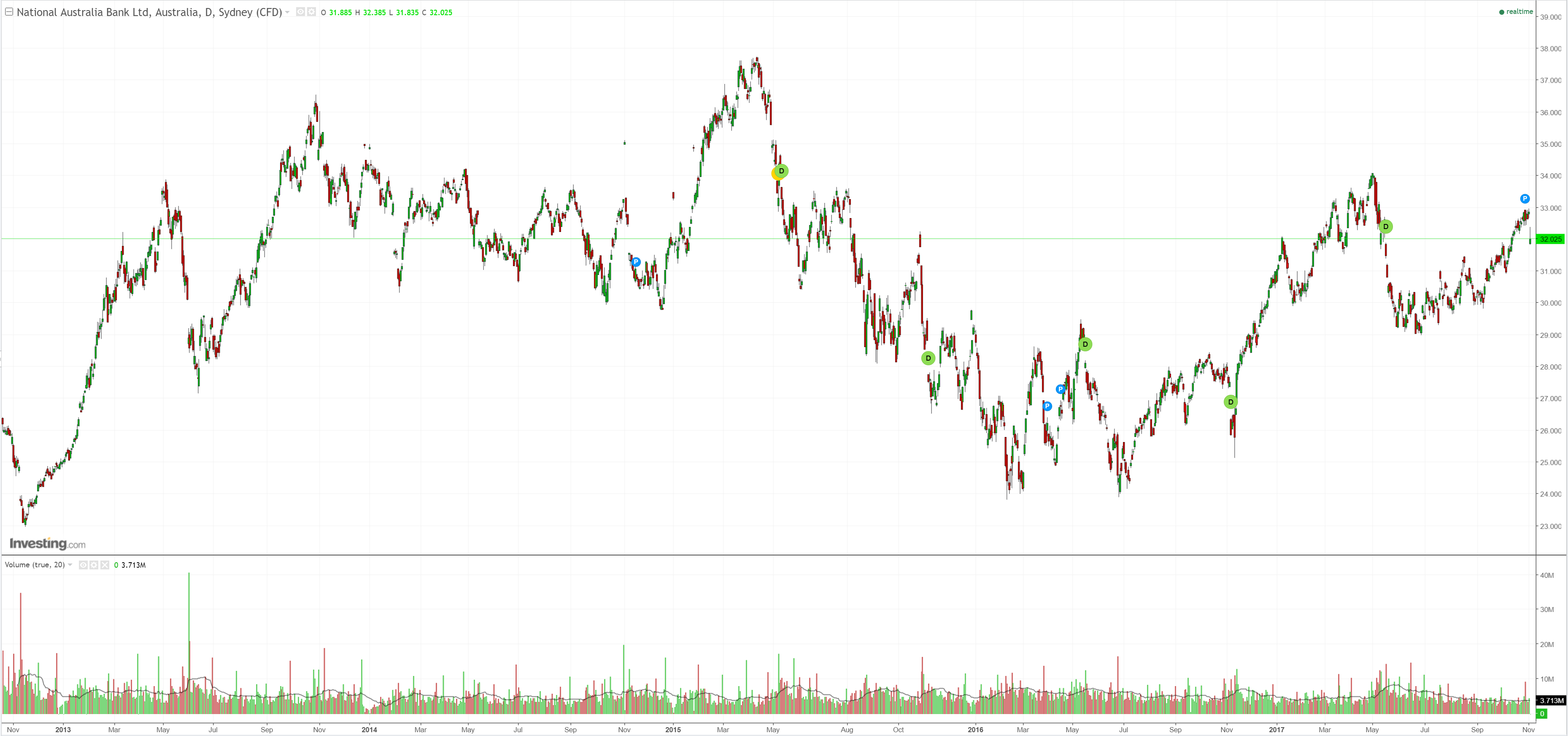Via UBS:
TWO LINER
Result in line. Good NIM. BUT flagged capex blowout in FY18 (guiding FY18 costs up 5-8% plus $500m-$800m restructuring charge). Costs then flat to 2020.
KEY NUMBERS (FY17)
(1) Cash NPAT +2.5% to $6,642m (Cons. $6,661m); (2) Cash Basic EPS 249cps (Cons. 250cps); (3) Final DPS held at 99c.
RESULT HIGHLIGHTS (2H17 seq. basis)
(1) Revenue +1.8% to $9,026m (Cons. $9,048m); (2) Group NIM at 1.88% (Cons. 1.85%); (3) Volume growth 2%; (4) Non-Interest Income -9% to $2,253m driven by lower trading income (Cons. $2,430m); (5) Costs +1.7% to $3,850m (Cons. $3,838m); (6) Pre-provision profit +1.8% to $5,176m (Cons. $5,210m); (7) BDD very low at 15bp or $416m (Cons. 14bps); (8) 90dpd -1bp to 40bps. Total NPLs -15bps to 70bps of gross loans. (9) CET1 -5bp to 10.06% (1H17 10.11%). DRP discount of 1.5% reintroduced.
GUIDANCE
(1) Costs to increase 5-8% in FY18E plus another $500m – $800m restructuring provision to be taken in 1H18; (2) Expenses then targeted to be broadly flat in FY19-20E excluding the restructuring provision; (3) Board expects to maintain FY18 dividends at the FY17 level (99cps per half) subject to no material change to external environment and satisfactory Group performance.
UBS COMMENT
Result was solid and the NIM stronger than expected, but the market will focus on the flagged cost guidance. Guidance would imply 2020 costs are $135m to $365m above current forecasts, which represents 1.5% to 4% of NPAT. Management expects this to be offset by stronger revenue, but the market may not incorporate revenue upside until there are signs of delivery.
Shares are down 3%:
But all that really matters to the broader banking context is this:
NAB will cut 6,000 jobs over the next three years, while hiring 2,000 new people with digital skills, including in artificial intelligence and robotics. The redundancies would lead to a provision charge of $500 million to $800 million in the first half 2018.
NAB said the cumulative cost savings from the new investment would be “greater than $1 billion” by the end of the full 2020 financial year “as we significantly simplify and automate processes, reduce procurement and third party costs and get closer to our customers with a flatter organisational structure”. It said it wanted to reduce “operational and regulatory risks from a simplified, more responsive and resilient technology environment”.
“When I think about a longer term plan and the challenges in the environment, all big businesses, particularly incumbent businesses, the reshaping of the workforce is going to be significant. I think it is important we face into that and we have a clear plan,” CEO Andrew Thorburn said in a briefing with reporters. “We are investing here to grow and drive productivity.”
And this:
Business groups have applauded the blocking of a proposed state-based bank tax in South Australia in the upper House of Parliament late on Wednesday night.
Eight Liberals, independent John Darley and two Australian Conservatives stayed true to their earlier promises and blocked the planned bank tax in a late night sitting. It had been earmarked to raise $417 million over four years.
They voted to have the bank tax measure excised from a broader Budget Measures Bill. Although there is still uncertainty about the complexities and the way in which that can happen on the legislative front, the bank tax has been blocked.
The tax was to be levied on the four big banks – ANZ, CBA, NAB and Westpac – plus Macquarie, in a similar style to the Federal major bank levy and was announced in the June State Budget by Treasurer Tom Koutsantonis.
That’s the thanks you get.


